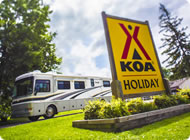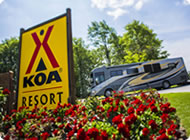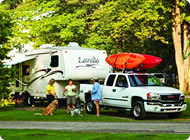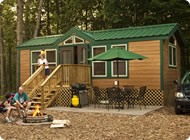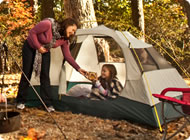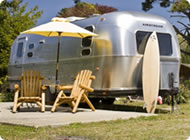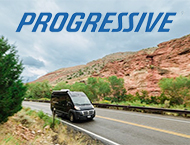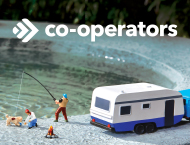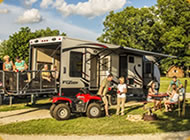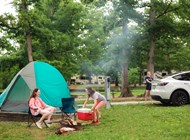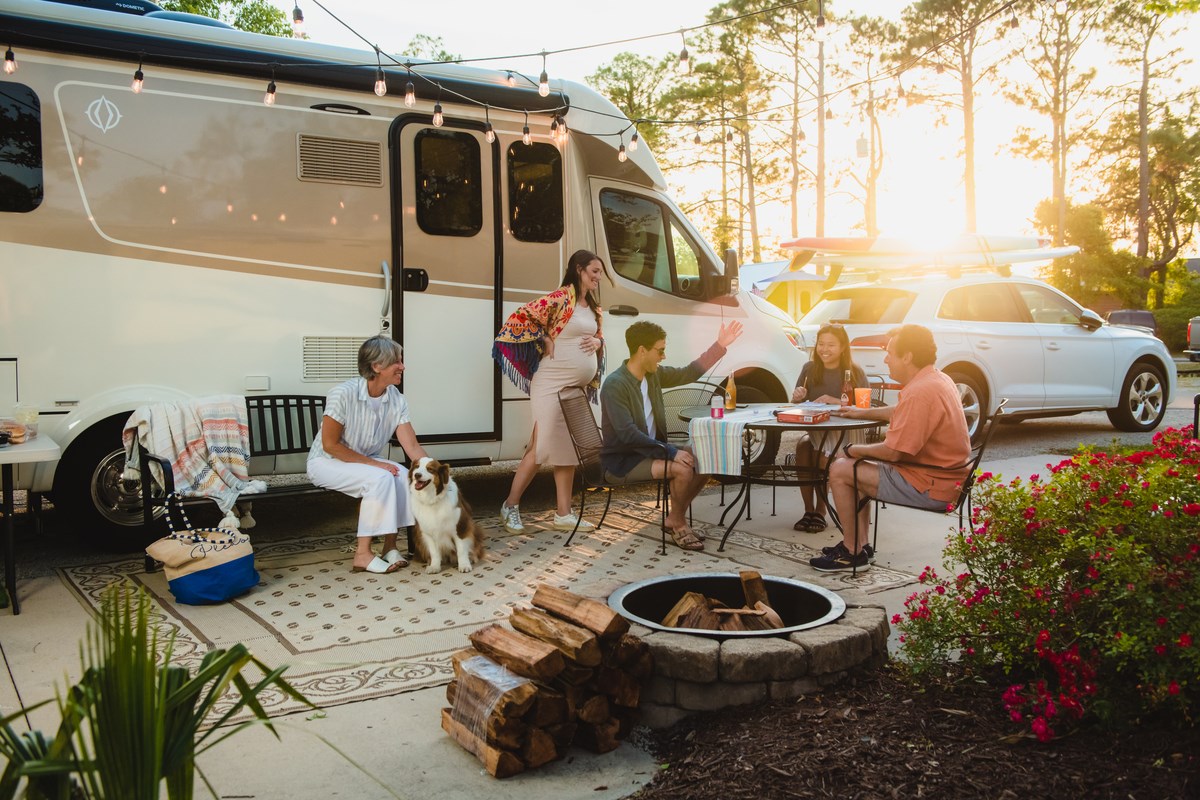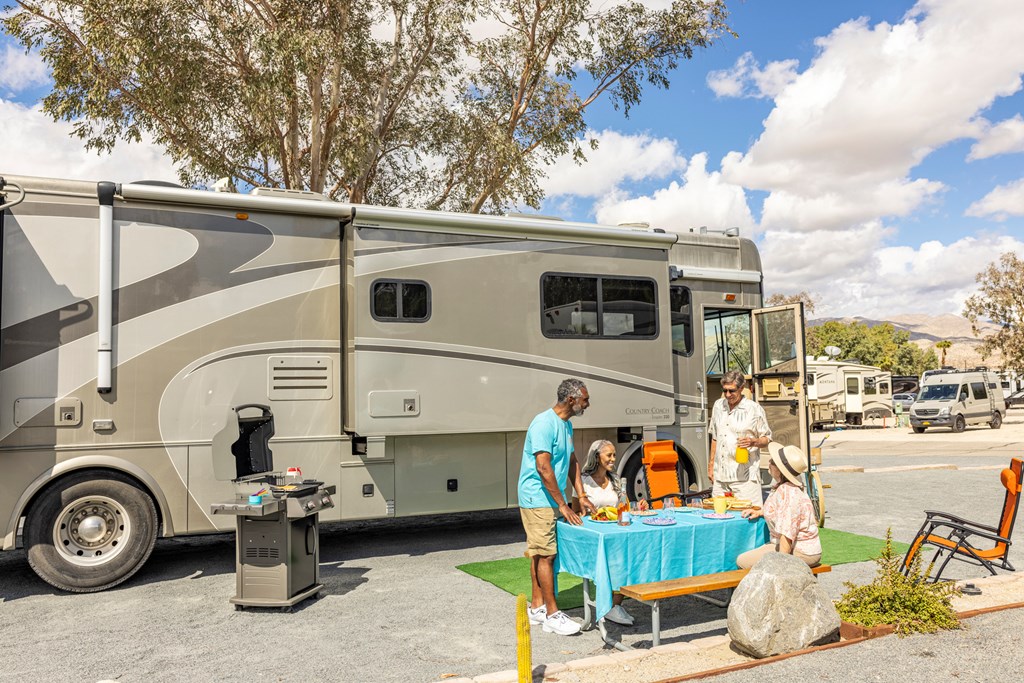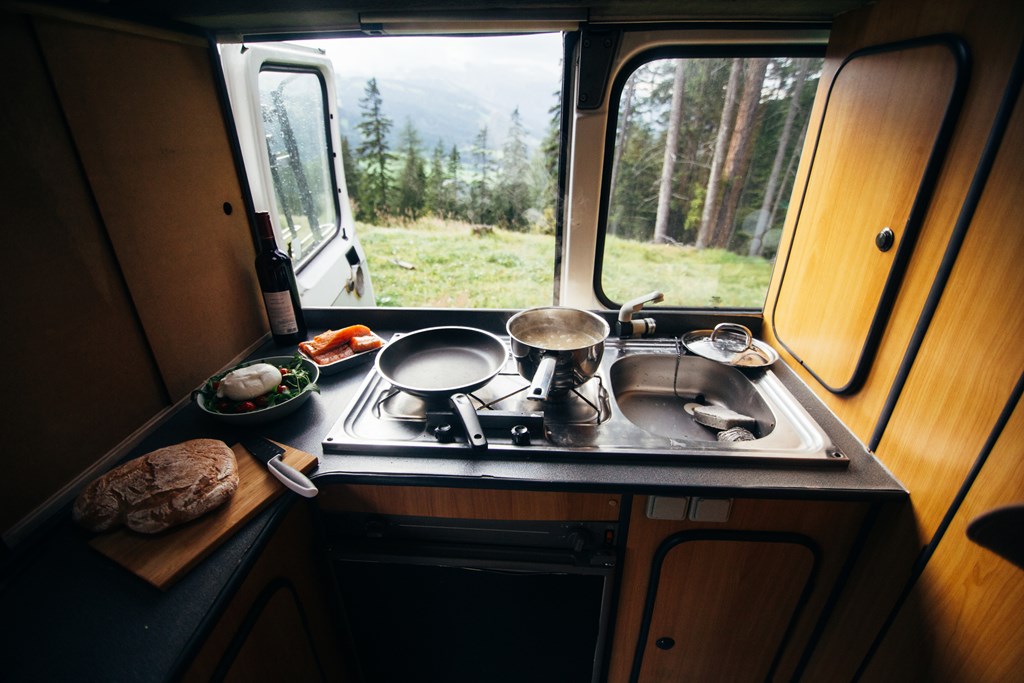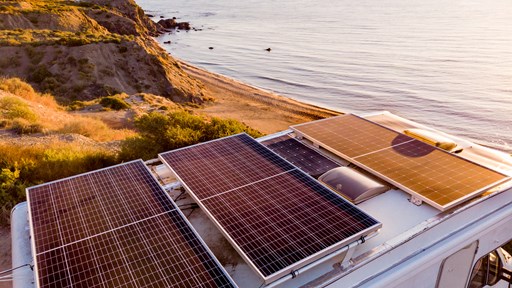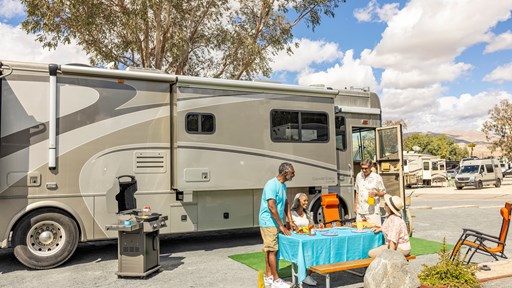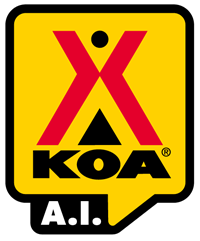Your RV amp service tells you how much current your camper can handle. If you exceed that current, it will trip a breaker. A 30-amp RV can consume up to 30 amps, while a 50-amp model can handle up to 50 amps. Knowing the difference between these two types enables you to shop for the right choice more effectively. It can also support more informed use of your electrical system.
30-Amp Service
The 30-amp service covers RVs with lower load requirements. It is found on smaller RVs and has limits to what it can run at the same time. Owners of 30-amp RVs should monitor power usage to avoid popping breakers. An RV with 30-amp service can power:
- One air conditioner
- Fridge
- Water heater
- Microwave
- Television
- Lights
- Small kitchen appliances
- Electrical outlets for small devices
Keep in mind that the 30-amp service will not be able to power all of these appliances simultaneously.
Characteristics of 30-amp service include:
- Plug: The plug has three prongs, including a 120-volt hot wire, a ground wire and a neutral wire.
- Wattage: An RV with 30-amp service delivers a maximum wattage of 3,600, but it may be slightly less in practice due to the decrease in voltage as the distance from the power source increases.
- Outlets: This model has fewer outlets than those with 50-amp service.
- Breaker: The breaker is typically a single row for a 30 amp RV.
While the plugs differ, you can plug into a 20-amp or 50-amp service with an adapter — or dog bone. When plugging into 50-amp service, you will still be limited to 3,600 watts. When plugging into 20-amp service, you will be limited to 2,400 watts.
50-Amp Service
RVs with 50-amp service are typically larger and meant to handle more amenities. You may choose an RV with 50-amp service if you plan to take longer trips or want enhanced comfort. An RV with 50-amp service can run:
- Two air conditioners
- Fridge
- Water heater
- Microwave
- Washer and dryer
- Television
- Heaters
- Electrical outlets for larger electronics
However, similar to the 30-amp service, not all of these appliances can be operated at the same time.
Characteristics of this service level include:
- Plug: The 50-amp RV plug has four prongs, including a neutral wire, two 120-volt hot wires and a ground wire.
- Wattage: The maximum wattage for this service is 12,000 watts but may be slightly less due to a decrease in voltage as the distance from the power source increases.
- Outlets: A 50-amp camper has more outlets than a 30-amp RV.
- Breaker: The breaker has a split panel because each leg of the 120 volts alternating current (VAC) goes to one side. The panels are set up to “share” the amp draw for total pull.
If you use a 50-amp trailer, you can plug into a 30-amp service with an adapter, but it will be limited to 3,600 watts.
Comparison Between 30-Amp vs. 50-Amp RVs
While campers with 30 or 50 amps have several similarities, they also include some differences, such as:
- Power capacity: An RV with 50-amp service can handle much more demand and run additional appliances at the same time.
- Model: The level of electrical service varies by the RV. Discover whether a camper is 30 amps or 50 amps before buying.
- Cost: RVs with 50-amp service are more expensive and larger, while 30-amp RVs are smaller, lighter and contain fewer amenities.
- Complexity: An RV with 50-amp service has a more complex electrical system, which may impact the difficulty of repairs, depending on the specific issue.
- Hookups: While 50-amp hookups are becoming more common, they do not exist at every campground, which may require you to plug in a 50-amp RV to a 30-amp hookup. Hookups with 30-amp service are much more prevalent.
- Comfort: A 50-amp model runs two air conditioners and can handle “heat pump” style A/C units. With 30-amp RVs, you can only power one air conditioner, which is less effective at maintaining temperatures in extreme weather.
Upgrading an RV Electrical System
If you own an RV with 30-amp service, you can upgrade to 50-amp service if desired, but it may be better to look for a new rig instead. If you decide to upgrade, the process requires electrical knowledge, so you will gain the best results by looking for a certified RV technician or electrician. A few scenarios that might prompt an upgrade include:
- A desire to improve appliance performance
- Frequent electrical issues, for instance, tripped breakers
- The ability to run more devices simultaneously
The cost to upgrade the system depends on the parts and materials needed. For example, a 30-amp camp trailer with outdated wiring may require completely replacing all components. Hiring someone to replace the wiring will increase the cost. The price range for such an upgrade is from $500 to $2,000 or more.
Here is an overview of the general process involved.
1. Assess
Look at your current system — including the power cord, circuit panel and specifications — to determine your existing electrical equipment. Inspect wiring and consider upgrading for compatibility with the increased electrical load. Be sure to consult wiring rules for the correct gauge size for the desired power use.
2. Prepare
Gather electrical tools and your new equipment, such as wires, a power cord and a breaker box. Disconnect the camper from shore power, turn off the main breaker and put on the appropriate protective gear.
3. Replace
Switch out the circuit breaker, power inlet and wiring. Connect and ground elements properly and double-check all wiring and connections after the work for safety and function. Depending on whether the unit is a stand-alone model or integrated into the new RV circuit breaker panel, you may also need to replace the converter.
Tips for Efficient Electrical Usage in an RV
An average home offers about 150- to 200-amp service. Since RVs provide less power than a home, users may seek ways to make their RV more efficient or reduce energy usage, especially in a 30-amp RV. Various methods enable more efficient electrical usage, including energy-saving practices, proper maintenance and wise appliance use. Top tips include:
- Turning off appliances when not in use.
- Using natural light or keeping selective lights on.
- Switching to LEDs.
- Avoiding nonessential electrical equipment, including hair dryers or high-wattage appliances, especially on limited power supply like a 30-amp RV.
- Getting regular electrical system maintenance from an expert.
- Cleaning filters in the air conditioning system regularly.
- Insulating windows to reduce heat or air conditioning loss.
- Monitoring energy usage to find areas of energy-wasting.
- Adding energy-saving devices like soft starters to stop amperage spikes in an air conditioning unit.
FAQs About RV Electrical Systems
Here are some common questions regarding camper electrical systems.
Is a 30- or 50-Amp RV Better?
Neither type is better than the other. The RV you choose depends on your electrical requirements and budget. You may choose a 50-amp camper so you can use extra amenities or a 30-amp model if you have a limited budget.
How Do You Troubleshoot Electrical Problems?
Like a home, an RV can have electrical issues occasionally, from malfunctioning appliances to tripped breakers. Here is a brief process to follow for figuring out the source:
- Consult the owner’s manual.
- Check the power source.
- Inspect circuit breakers or fuses with a multimeter.
- Test outlets.
- Examine appliances to ensure compatibility with your power supply.
- Inspect wiring and connections.
- Test inverter and converter.
What Electrical Terminology Do You Need to Know for Your RV?
A few terms to know include:
- Amperes (current): This term refers to the quantity of electrons flowing through a conductor. It signifies how much electricity is moving through the system.
- Wattage (watts): This metric measures electrical energy and shows how much work a device can do. It equals one ampere under a pressure of one volt.
- Voltage (volts): This term refers to the electrical pressure or difference between two points in a circuit, which determines how strong the electricity is.
- Resistance (ohms): Determine the electrical resistance of a material with this value. The higher the resistance, the more challenging it is for electricity to flow.
- Hot wire: This wire carries power from the source to the electrical device.
- Neutral wire: This wire completes the circuit, providing a return path for power to return to the source.
- Ground wire: This safety feature allows electricity to flow into the ground, reducing the risk of electrical shock.
What Is the Importance of Surge Protectors for RVs?
An external surge protector protects electrical devices and systems from power surges. It is an essential part of electrical protection. These devices benefit RVs, which move around and connect to many power sources. They also protect from surges caused by lightning strikes.
Why Trust Kampgrounds of America?
KOA is a national leader in the camping industry, with over 500 campgrounds across North America. The campground chain began in 1962, meaning extensive experience through years of working with campers and RV owners.
The KOA team has specialized knowledge in camping and RV topics, including details like electrical systems. This knowledge enables the sharing of reliable insights. KOA is also known for consistency in training, expertise and a dedication to serving RV owners and campers, providing an exceptional experience at the campground and between trips.
Camp at a KOA
Whether you bring a camper with 30- or 50-amp service, you can hook it up at a KOA. Campgrounds offer 30/50-amp hookups with options for water and sewer to provide full hookups. RV Sites also include level ground to park your rig, Back-In and Pull-Thru RV Site options, and added amenities to enhance your stay. Find and reserve an RV Site for your next trip.
About the Author: Kampgrounds of America
Kampgrounds of America is the largest system of open-to-the-public campgrounds in the world, with over 500 locations across the United States and Canada. Founded in Billings, MT in 1962, KOA’s family of campground brands – KOA Journey, KOA Holiday and KOA Resort – today serve more than a million camping families each year. KOA is dedicated to “connecting people to the outdoors and each other” by providing people with a variety of camping experiences and the information they need to make the most of their camping trip. Read more of their camping and travel resources by visiting KOA.com/blog.






